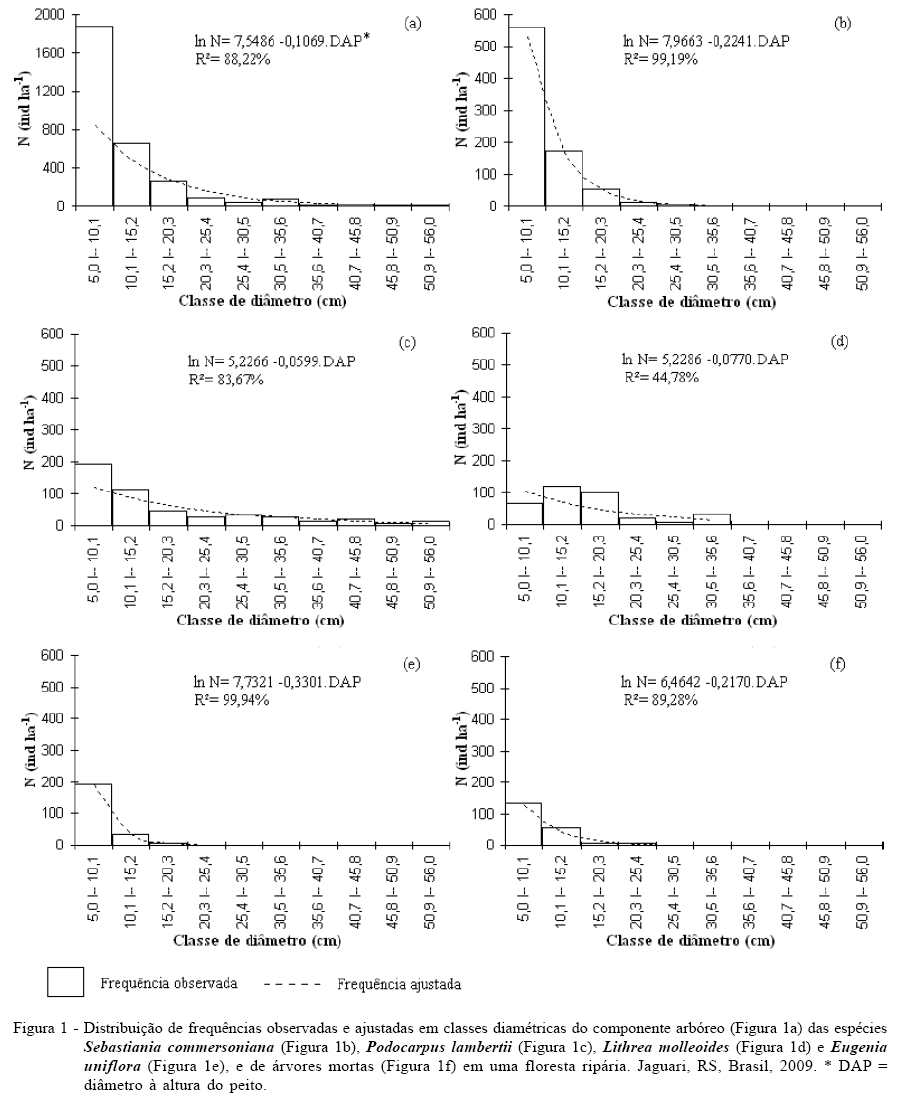This study analyzed the tree component structure of a riparian seasonal decidual forest, in Jaguari, RS. Data was collected in 15 10mx10m-plots randomly assigned along the riparian forest of a Jaguari river tributary. In these plots trees showing DBH equal or above 5cm were identified and measured. Podocarpus lambertii, Sebastiania commersoniana and Lithrea molleoides were the most representative species of the riparian forest. The tree diameter distribution in general and for the species with the higher importance value index showed the inverted "J" trend, typical of uneven-aged forests, and unbalanced structure resulting from different mortality and recruitment rates. The vertical and height species structure showing the highest importance value tended to normal distribution, with most of the individuals positioned in or close to the average height class.
phytosociology; tree stratum; community structure; riparian forest; southern plateau



